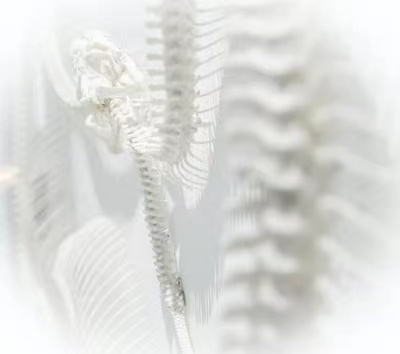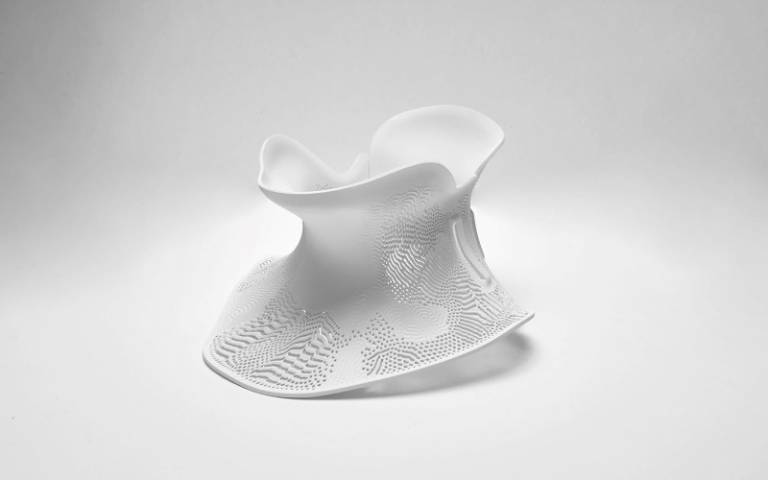创新背景
许多患有神经系统疾病的人,如运动神经元疾病、脊髓损伤、脑瘫或中风的人,都会佩戴被称为矫形器的医用支架,为身体虚弱的部分或关节提供支撑。
创新过程
在《自然科学报告》的一篇论文中,伦敦大学学院外科与介入科学学院的研究人员展示了他们开发的一种制造矫形器的新方法的成功。这项技术结合了3D扫描和3D打印(这两种类型的计算机辅助设计或CAD),创造了一个独特的设计,符合身体,坚固和多孔,类似于骨骼。

他们在一位患有神经系统疾病的妇女身上演示了这个过程,她无法抬起头,严重影响了她的生活质量,所有其他制造颈部支撑的方法都失败了。使用新的设计工作流程,为她制作了一个个性化的衣领,她每天可以戴上4个小时,显著改善了她的姿势、舒适度和呼吸。
卢克·黑尔博士也是英国国家医疗服务体系的一名医生,他说:“制作医用牙套的传统方法通常需要六周的时间,需要多次去医院,还需要一名熟练的临床医生制作一个石膏模型,然后用它来制作一个热塑性项圈。有些特殊情况的病人很难忍受这种沉重的石膏。这可能会导致极度不适,并可能阻止模具凝固。此外,对于那些病情迅速发展的患者,延长提供支架的时间可能意味着在提供支架之前,支架就已经恶化了。”

然而,英国皇家国家骨科医院的多学科UCL团队已经开发出一种全新的方法,可以缓解患者的舒适度,并且可以在一次医院访问中迅速产生。
黑尔博士补充说:“支架可以就地3D打印。最重要的是,这意味着个人可以在一次访问中创建定制设计,而传统方法需要6周时间。这将为他们节省数周的等待时间,特别是对于那些患有严重神经障碍的人,还可以为他们省去多次前往医院的潜在压力和负担。”
伦敦大学学院外科和介入科学学院的迪帕克·卡拉斯卡尔博士说:“我们为一位患有横贯性脊髓炎的患者设计了一个颈圈,这意味着她无法自己抬起头来,从而验证了我们的方法。”然而,同样的技术可以应用于身体任何需要支撑的部位。”
创新价值
这可能会改变一系列不同神经系统疾病患者的生活,甚至是正在从创伤中恢复的个体。整个工作流程都可以自动化,因此,在未来,可以被各种医院采用,极大地扩大了这项新技术的潜在用途和影响。这项研究有望证明,技术如何结合起来,对患者的生活产生切实的影响,但也可以利用自然来激发独特和创新的解决临床问题的方案。
创新关键点
新的工作流程使用3D扫描来创建针对每个病人的特定和个性化设计。然后,算法被用于使设备更舒适,并生成一个多孔、轻的结构,但也在需要的地方坚固。病人可以在3D打印之前查看设计。
创新主体
伦敦大学学院(University College London,简称:UCL ),1826年创立于英国伦敦,是一所公立研究型大学,为伦敦大学联盟的创校学院、罗素大学集团和欧洲研究型大学联盟创始成员,被誉为金三角名校和“G5超级精英大学”之一。
UCL是伦敦的第一所大学,以其多元的学科设置著称,于REF 2014 英国大学官方排名中,位列全英之冠,享有最多的科研经费。UCL的医学、解剖学和生理学、建筑学、教育学、考古学、计算机科学、计算金融学等学科排名均位居世界前列,与LSE并称为“英国现代经济学研究的双子星”;其人文学院颁发的奥威尔奖则是政治写作界的最高荣誉。
Innovative 3D-printed collars help patients with neurological diseases
In a paper in Nature Scientific Reports, researchers at University College London's School of Surgery and Interventional Sciences demonstrate the success of a new method they have developed to make orthoses. This technology combines 3D scanning and 3D printing (both types of computer-aided design or CAD) to create a unique design that fits the body, is strong and porous, similar to bone.
They demonstrated the procedure on a woman with a neurological condition that left her unable to lift her head, severely affecting her quality of life, and all other methods of creating neck support failed. Using a new design workflow, a personalised collar was made for her that she could wear for up to four hours a day, significantly improving her posture, comfort and breathing.
Dr Luke Hale, who is also an NHS doctor, said: "The traditional method of making medical braces usually takes six weeks, requires multiple hospital visits and a skilled clinician to create a plaster cast, which is then used to create a thermoplastic collar. Some patients with special conditions find it difficult to tolerate this heavy cast. This can cause extreme discomfort and may prevent the mold from setting. In addition, for patients with rapidly progressing disease, prolonged stenting may mean that the stent has deteriorated before it is offered."
However, the multidisciplinary UCL team at the Royal National Orthopaedic Hospital has developed an entirely new approach that can ease patient comfort and can be produced quickly in a single hospital visit.
Dr Hale added: "The scaffold can be 3D printed in situ. Most importantly, it means individuals can create custom designs in a single visit, compared to the six weeks it would take traditionally. This will save them weeks of waiting, especially for those with severe neurological disorders, and the potential stress and burden of multiple trips to the hospital."
Dr Deepak Karaskar, of UCL's School of Surgery and Interventional Sciences, said: "We validated our approach by designing a collar for a patient with transverse myelitis, which meant she was unable to lift her head on her own. However, the same technique can be applied to any part of the body that needs support."
智能推荐
AI+材料化学 | 创新利用机器学习缩短测试电池材料的时间
2022-08-25麻省理工学院的研究人员利用机器学习工具,更快建立精确的计算机模型,帮助科学家缩减电池材料的测试时间。
涉及学科涉及领域研究方向使用硫化学气相沉积制备超高折射率的聚合物
2022-08-05通过一步法气相沉积工艺提高折射聚合物薄膜的高透明度。
涉及学科涉及领域研究方向激光+树脂 | 突破3D打印限制
2022-06-29综合利用激光、纳米材料和树脂实现3D打印无逐层结构支撑。
涉及学科涉及领域研究方向AI+能源化学 | 利用人工智能准确预测锂离子电池使用寿命
2022-08-18科学家们发现了如何准确预测锂离子电池的有效寿命,这一进展可能会加速电池的开发并改善制造。
涉及学科涉及领域研究方向